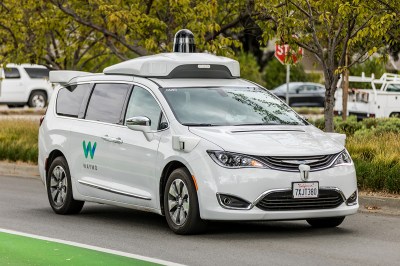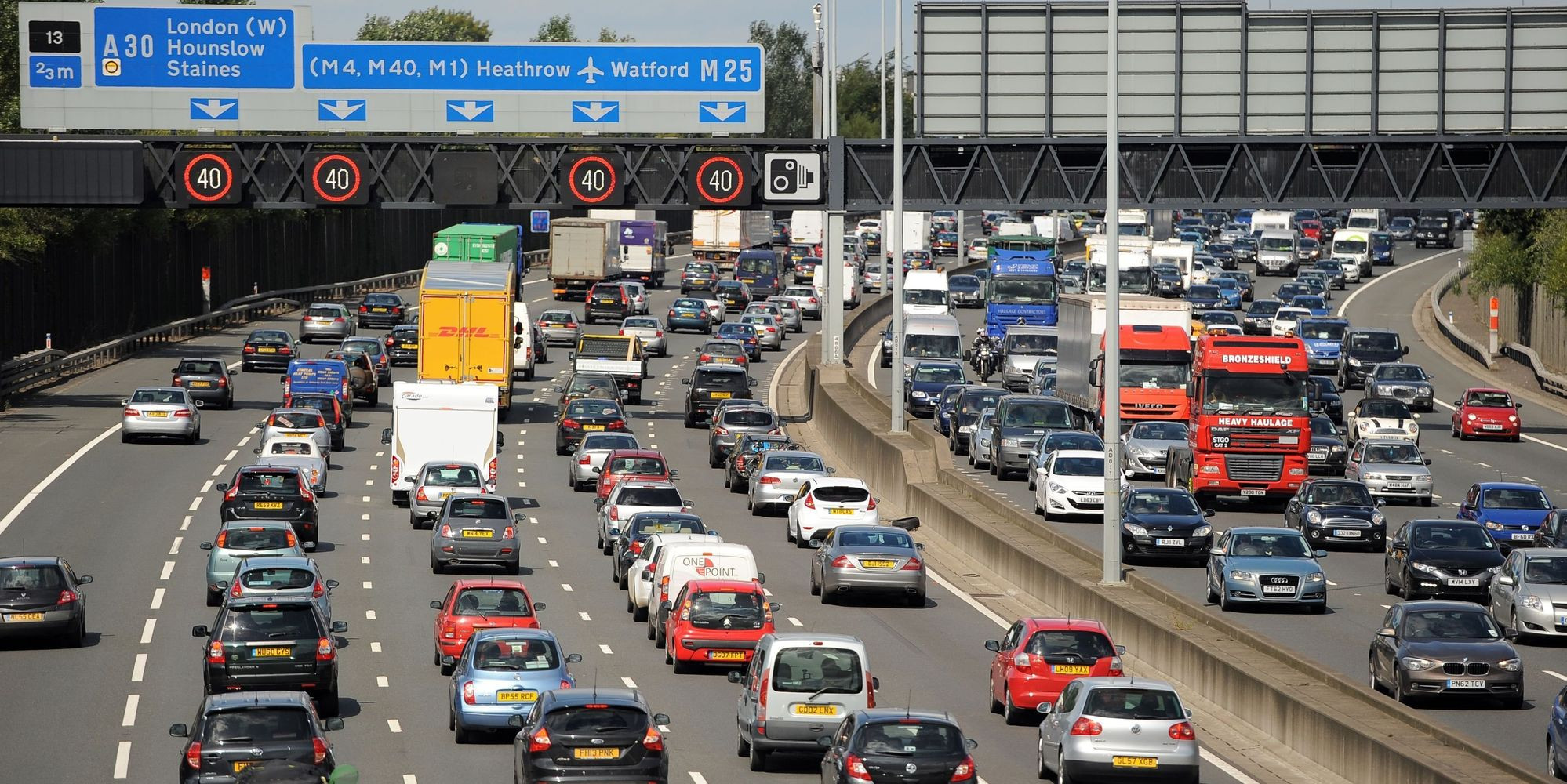Much of a car’s interaction with the world around it is still a very stand-alone, analog experience, regardless of whether said car has a human driver or a self-driving computer system. Mark I eyeballs or equivalent computer-connected sensors perceive the world, including road markings, traffic signs and the locations of other road traffic. This information is processed and the car’s speed and trajectory are adjusted to ideally follow the traffic rules and avoid unpleasant conversations with police officers, insurance companies, and/or worse.
An idea that has been kicked around for a few years now has been to use wireless communication between cars and their environment to present this information more directly, including road and traffic conditions, independent from signs placed near or on the road. It would also enable vehicle-to-vehicle communication (V2V), which somewhat like the transponders in airplanes would give cars and other vehicles awareness of where other traffic is hanging out. Other than V2V, Vehicle-to-Everything (V2X) would also include communication regarding infrastructure (V2I), pedestrians (V2P) and an expansive vehicle-to-network (V2N) that gives off strong Ghost in the Shell vibes.
Is this is the future of road traffic? The US Department of Transport (DOT) seems to think that its deployment will be a good thing, but V2X has been stuck in regulatory hurdles. This may now change, with the DOT releasing a roadmap for its deployment.
CB Radio On Steroids

No doubt many of us have used or are aware of the existence of Citizens Band radio (CB for short), which is a radio system operating around the 27 MHz band, first popularized in the US during the 1950s and gaining world-wide popularity during the 1970. It is an early example of an ubiquitous communication system that was, and is, used both by citizens at home and installed in just about any type of vehicle and boat. For truckers in particular it provides a means to obtain constant updates on road conditions, as well as for truck-to-truck communications should the need arise.
Over the years CB has become less relevant to the average citizen, who these days is equipped with a smartphone and drives a vehicle that has more computing power and communication options than the Space Shuttle. While connected to the internet, they can get route updates, warnings about road condition and construction, etc. delivered to various apps on the smartphone, to the infotainment system, a dedicated satnav device and so on. Yet the concept remains of being tied into some form of communication network that provides information that would otherwise be hard to come by.
Meanwhile features such as cruise control and collision avoidance systems (CAS) keep tabs on what is going on around the vehicle and any potential traffic rule violations to some extent. The number and types of CAS and other forms of advanced driver-assistance systems (ADAS) in modern cars keep increasing, using everything from LIDAR and cameras to millimeter-wave radar systems to prevent collisions, keep the car in the current lane, detect braking cars ahead and integrate data obtained via a data link on upcoming traffic lights and other notable features long before they become visible.
With such a long list of safety features and data links a part of an increasing number of vehicles on the road, it raises the question of whether this V2X deployment would do more than to standardize and expand upon much of the technology that is already out and about on the roads today.
Defining V2X
As with many marketing-buzzword-bingo-laden terms, it is probably a good idea to take a look at the overview of the National V2X Deployment Plan (PDF) which the US DOT recently released. The title for the document makes it clear that the primary consideration is that of safety, specifically increasing road safety by preventing collisions and with it the deaths and injuries that occur on US roads every year. Motor vehicle fatalities on US roads hit 42,512 deaths in 2022, or 12.76 per 100,000 inhabitants. More worryingly is an increase in pedestrian and bicycle fatalities, with 81% more pedestrians dying in 2022 compared to 2013.
So how would V2X prevent these fatalities? If we scroll down to page 11 of the DOT document to the actual roadmap, we can see that for the period of 2024 – 2028 the short-term goals are to deploy V2X on 20% of national highways and have the top 75 US metro areas equip 25% of their intersections with the technology. For vehicles, two manufacturers would commit to producing vehicles capable of using the selected 5.895 – 5.925 GHz band by the 2028 model year. From that period the V2X system would be expanded to cover more of the highways and intersections.
If we consult the referenced ITS America National V2X Deployment Plan which was published in Aril of 2023, we can get a bit more background information. ITS America is a collaboration of infrastructure owners and operators (IOO) and the aforementioned OEMs. The V2X-enabled cars would have 5.9 GHz-enabled radios, which communicate with road-side units (RSU) to exchange relevant information, building upon the knowledge gained so far from Cellular-V2X (C-V2X) trials.
The RSUs would be placed at intersections, where it could eliminate many crashes while also providing the driver with information on when a traffic light will turn green and prevent the running of red lights. In addition, V2X-enabled cars would also be able to communicate with V2X-enabled bicyclists, pedestrians and similar, who would also have a V2X-enabled device on their person or bike. This would then communicate with the vehicles ADAS, ideally preventing collisions between the vehicle and these much squishier traffic participants. These personal V2X devices could be integrated into smartphones at some point, for example.
Casualties Versus Security
On one hand it sounds wonderful if cars and trucks can effectively no longer hit pedestrians, cyclists, scooters, etc. because of V2X-ADAS integration, but there are some concerns regarding privacy and security. There is the obvious worry about spoofed V2X messages that might mess with traffic, or even cause the very casualties that it sought to avoid. To this end the DOT hosts the ITS Cybersecurity Research Program, which among other things is working on ensuring trusted communications between vehicles, infrastructure and other parties in a V2X-enabled system.
This would seem to involve some secure way to signing messages, while guaranteeing some level of anonymity. The former would seem to be standard secure communication practice, while the latter makes sense when the goal of V2X vis-à-vis other traffic participants is to merely avoid becoming kinetically intimate. In order to avoid said collision, you only need need to know where the vehicle, bike or pedestrian in question is roughly located before any onboard sensors can detect it.
Presumably this might include common scenarios such as a person running out from behind a row of parked cars into traffic, or another car popping out from a narrow side street in one of those harrowingly picturesque ancient city centers. The scenarios referenced in the documents are left turns and intersection crossings, but presumably one could come up with many more scenarios.
Implementation-Dependent

To circle back to the question asked at the beginning, of whether V2X is the future of road traffic, it’s hard to give a definitive answer here. Although the benefits are stark, and the technologies required neither new nor bleeding edge, one only has to look at the sometimes outright hostility that for example battery-electric vehicles (BEVs) as well as self-driving cars receive. Even though BEVs are over a century old by now, and self-driving cars like those from Alphabet’s Waymo are demonstrating clearly superior incidents-per-kilometer statistics than human drivers, bias persists.
If V2X wants to succeed, it should be implemented and handled in a way that works with these biases, rather than against them. If lives are saved due V2X-enabled cars with a human driver pulling off a superhuman collision avoidance maneuver, or a child not run over after running into traffic because the V2X-enabled truck already stopped before the child came into view, then those are convincing arguments.
Perhaps V2X will have an easier time here than self-driving cars and BEVs, as it does not seek to change or replace anything, no more than that ADAS features in today’s cars do. It might even be quite realistic to retrofit V2X into existing vehicles, significantly promoting kinetic hesitancy in close traffic situations, but these are all things that we will have to wait and see what happens.
